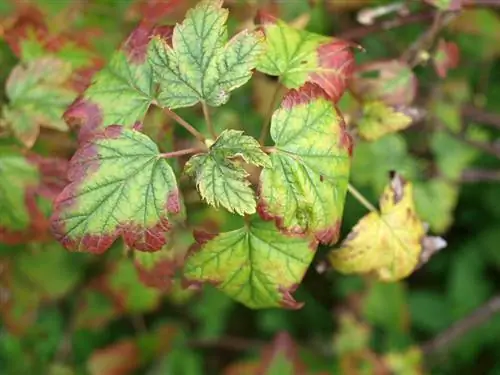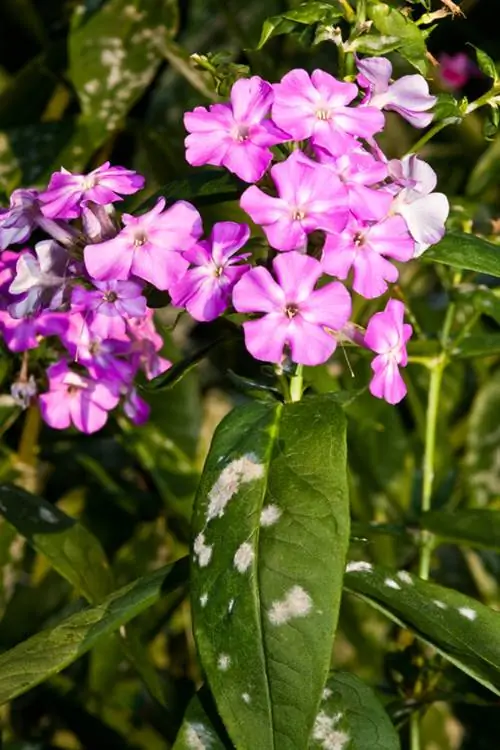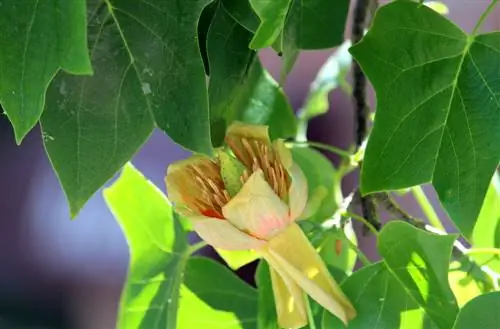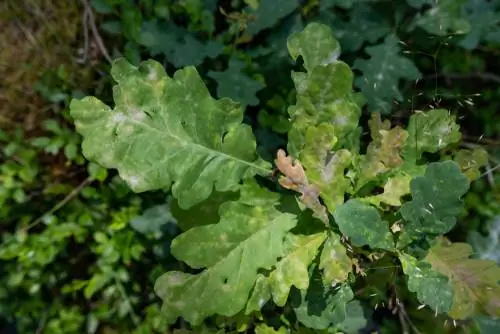- Author admin [email protected].
- Public 2023-12-16 16:46.
- Last modified 2025-01-23 11:21.
If angel trumpets catch something, it is particularly a shame to lose their high jewelry value. You can read about the ailments that can plague the beautiful South American woman and how you can fight them in the following article.
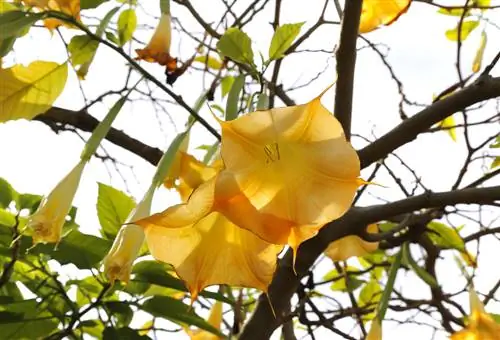
What diseases can affect angel trumpets?
Angel trumpets are rather insensitive to diseases, but suffer from pests such as black weevils, spider mites, aphids and leaf bugs. Water showers, nematodes, predatory mites or pesticides can be used against these.
The Vulnerabilities
The good thing first: diseases are not a big issue with the angel trumpet. It is less affected by fungi and viruses. If she leaves her leaves hanging, it is usually her inexhaustible thirst that is causing her problems. You also have to pay close attention to a rich nutrient supply in general, because as a nightshade plant, the angel's trumpet is also a heavy feeder and quickly complains if there is a lack of energy supply.
What, in contrast to diseases, is definitely an issue with the angel's trumpet are pests. Of the little pests, there are some species that have developed a taste for their large, soft and delicate leaves. These mainly include:
- Bigmouth Weevil
- Aphids
- Spider mites
- Sheet bugs
All of these pests can occur more frequently from May onwards over the summer and make themselves felt in their own way.
Bigmouth Weevil
The black weevil attacks the angel's trumpet relatively often. The beetle leaves typical cove-shaped feeding marks on its leaves - although these are unsightly, they are less of a problem for the plant. Much more problematic are the larvae that live in the root system and eat through it - which prevents the angel's trumpet from absorbing water, which is so important. To kill the larvae, it's best to use nematodes (€5.00 on Amazon). The nematodes kill the larvae. You can collect the adult beetles - but given their nocturnal activity, this is a bit of an effort.
Spider mites
Spider mites have a silvery speckled coating on the leaves and fine webs between the leaf axils. You can also see the mites with the naked eye. If the stage is not yet advanced, you can first deal with a spider mite infestation with a strong shower of water. If the angel's trumpet is still small, you can then wrap it in foil, which will kill the mites. If the infestation is more severe and more advanced, you should cut back the plant radically, let predatory mites loose on it or, if necessary, spray it with a pesticide.
Bugs and aphids
If you have leaf bugs or lice, you can also first resort to a plant-friendly water shower - mixing in a little soap can also help. Then cover the plant with a fly net.


